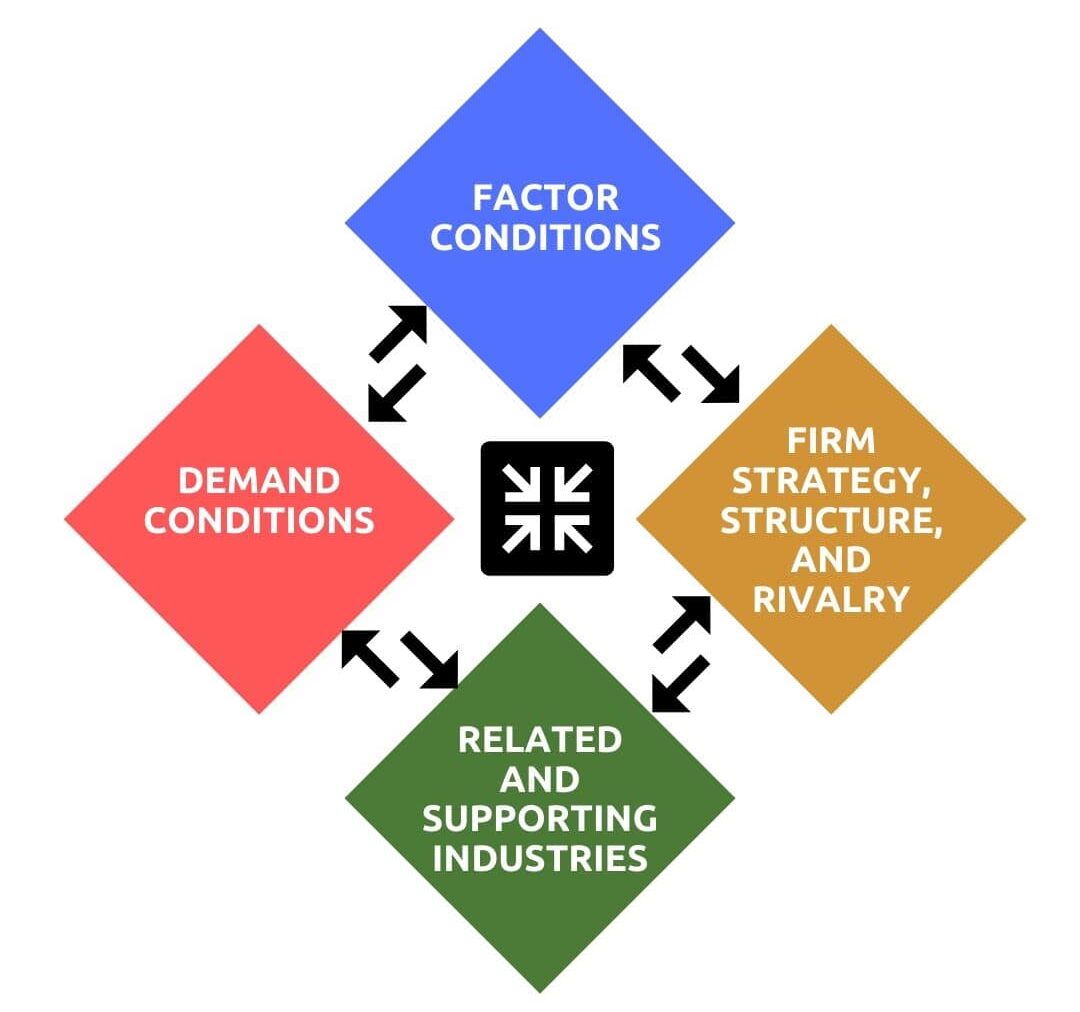Earlier a country’s economic development was based either on the degree of specialization or diversification of a country’s production and trade structure. Based on Adam Smith’s concept towards the division of labor and specialization for economic growth and development to Heckscher-Ohlin Samuelson (HOS) model of international trade, countries should specialize in producing and specializing in the goods in which they have a comparative advantage. However, after the Second World War, the idea was that economic growth and development may be achieved by export diversification (not specialization). There were active efforts by the government to promote industrialization and economic growth. Export diversification is often the primary objective of many developed countries. Export diversification is also equally important for many developing countries. Some of the developing countries are dependent on a relatively small range of products, generally agricultural commodities. In other words, primary products constitute a large percentage of their overall export Continue reading
International Business Strategies
Three Approaches for Promoting Diversity in the Workplace
Though, diversity can have a wide range of meanings, some companies use the traditional Equal Employment Opportunity Commission (EEOC) definition of diversity, which deals with differences in gender, racioethnicity, and age. Other companies tend to favor the broadest definitions of diversity, ones that encompass differences in gender, racioethnicity, age, physical abilities, qualities, and sexual orientation, as well as differences in attitudes, perspectives and background. Many individuals rely on a more detailed definition of diversity considering diverse people as being in the non-dominant social system who have been traditionally under research and under served. While there is no correct definition of diversity, the three diversity initiatives discussed in this article seem to target a definition that encompasses creating a diverse work environment that is inclusive to everyone, specifically focusing on the inclusion of minorities and non minorities. Three Main Approaches to Workplace Diversity 1. Colorblind Approach The colorblind approach is similar Continue reading
Evaluation of Porter’s Diamond Model
In the globalization era, we observed an increment of multinational corporations as well as small businesses that aim to internationalize. Those, in order to be successful in their internationalization process, try to find abroad a location that fits them the most institutionally, culturally and opportunities wise. To make this happen, MNCs uses home and host location strategies which reflect to international business theories through different models. Those models assess external environment analysis of a specific country and explain the concepts used behind the chosen location. Out of the many useful models explaining location strategies used by international companies, this article will focalize on the Diamond Model and discuss whether is a useful concept for international firms to pursue the best entry mode and furthermore argue the advantages and disadvantages through the examination of a real case example such as the multinational IKEA. The Diamond Model was introduced in the book Continue reading
Understanding the Importance of International Business Strategy
The survival and progression of businesses in the 21st century is highly dependent on the ability of firms to expand beyond their national borders, taking into account the cost effectiveness of expansion and the complexity and risks associated with the company’s chosen international business strategy. The resources and objectives of a firm, as well as the demand for their product outside their national borders are important in taking the decision to globalize a company’s products and/or services. Although three strategies are more common, namely multi domestic, global and transnational approaches, the fourth strategy available to firms is the international approach to global expansion. This article will analyze the two approaches that differ in local responsiveness and cost pressure for the business, with the international approach as the least responsive and expensive for the company and the transnational approach as the most costly and locally focused from the four options available Continue reading
Moving to Blue Ocean Strategy – Shift from Red Ocean to Blue Ocean
In global market today, it can be supposed that there are two typical kinds of oceans: read oceans and blue oceans. Of two sorts of market, red oceans are defined as a known space for all existent industries nowadays. On the contrary, blue oceans are regarded as an unknown area for industries which do not exist. As a result, red oceans present all existing rules related to business competition and industrial regulations. This market defines and determines the boundaries for all games and rules. In this market, companies strive to compete with their competitors and rivals in order to gain better benefit and dominate more market share of current demand. Therefore, red oceans provide for space for enterprises to focus on their competition for decades. However, the space is limited while competitive battles are becoming increasingly fierce. There are more and more participants wanting to invest in the same products. Continue reading
Porter’s Five Forces and Three Generic Strategies
The long development of Porter’s Five Forces Analysis has brought to the fact that those forces become the determinants of the industry’s competition. These five forces are treat of new entry, rivalry among existing firms, treat from substitute products, bargaining power of buyers, and bargaining power of suppliers. Furthermore, five forces analysis is treated by the organization to measure the level of competition, besides that, it is used as a strong first step in understanding how one industry compares to another and also to determine industry profitability because they influence the prices, costs, and required investment of firm in an industry. In order to be competitive enough, a normal company that seeks profitability would have to understand how they work in its industry and how they affect the company in its particular situation. Therefore, Three Generic Strategies were implemented to establish a strategic agenda for dealing with these five forces. Continue reading





